IT IS ANOTHER indication of how much faster time rushes by as you get older, but it is still hard to believe that the first Audi RS model was launched 25 years ago. It was the Audi RS 2 Avant.
Since then, Audi has offered up a total of 25 different RS models, always desirable and, in the case of some of the earlier models, increasingly collectable.
For 2019, there will be two more completely new models in the range.
“Every RS model expresses the passion that we put into developing our high-performance cars,” said Oliver Hoffmann, Managing Director of Audi Sport GmbH.
The RS models are the spearheads of their respective product lines, standing for performance, prestige and exclusiveness at the limit of what is technically feasible without any loss of everyday usability. Many of them are pioneers in their market segments and trailblazers for technical innovations – that applied to the Audi RS 4 Avant with its barnstorming biturbo V6 19 years ago and it applies just as much to the TT RS and its multi-award-winning, forceful five cylinder in its latest evolutionary stage.

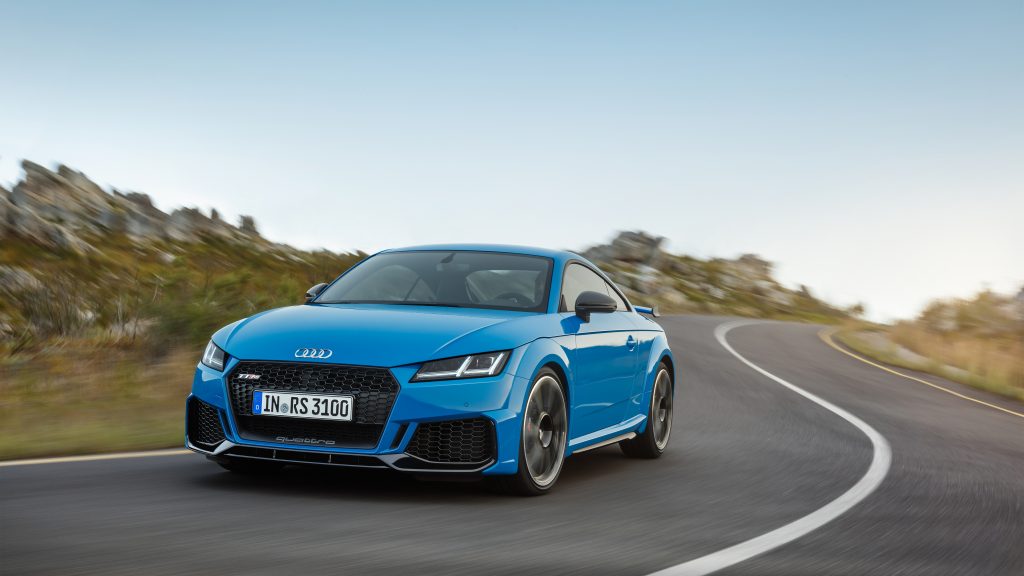
RS 2 Avant to RS 4 Cabriolet: Dynamism rooted in tradition?
The RS models have been making a splash for a quarter of a century – five milestones merit particular mention.
In 1994, the Audi RS 2 Avant (232 kW) with its four-valve, five-cylinder engine wrote the first chapter of the RS story. With this car, the company established the segment of dynamic high-performance station wagons. The quattro drive with its self-locking centre differential that had proven itself in motor racing and rallying made it possible to transfer this high performance to the road.
In 1999, the Audi RS 4 Avant based on the S4 of the time introduced a new dimension in terms of power to the medium-size class. Under the bonnet, a V6 engine with displacement of 2.7 litres, five valves per cylinder and biturbo charging does all the work – just like in the S4. The engineers at what was then quattro GmbH developed the power unit to give it even more vibrancy and higher torque for use in the RS 4. In collaboration with Cosworth Technology, the cylinder head was newly developed, the intake and exhaust ports were revised and the cross section of the air ducts were enlarged on the suction and compression sides. Additionally, the turbochargers were larger and the boost pressure increased compared with the S4. As a result, the RS 4 engine developed maximum power of 280kW instead of 195kW.

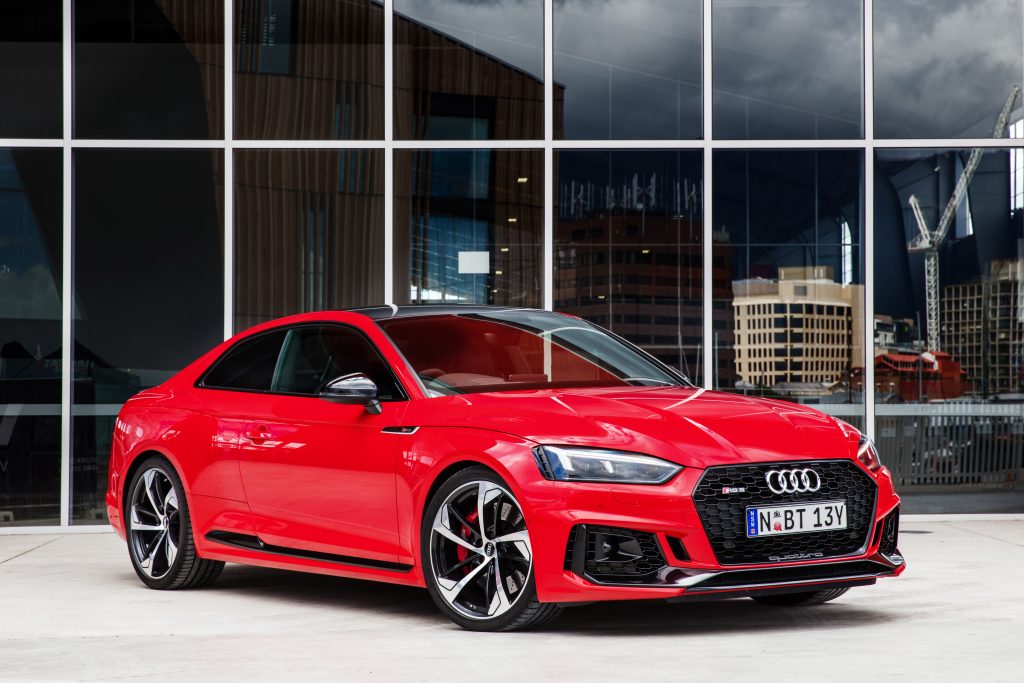
The second generation of the RS 4 followed in 2005. Numerous innovations, many of which originated in motorsports, characterised this generation including the V8 engine with 309kW. It was the first time that a manufacturer had relied on the combination of petrol direct injection and a high-rev concept that allowed up to 8250rpm. The petrol direct injection engine enabled improved power output through more effective production of the fuel/air mixture. In the R8, which enjoyed success at Le Mans, the FSI technology had already proven its performance in impressive style. In 2007, the engine was also used in the first generation of the Audi R8. The suspension offered the latest generation of permanent all-wheel drive as well as the Dynamic Ride Control damper system first used in 2002 in the RS 6. With its asymmetric dynamic torque distribution in the ratio of 40 percent front to 60 percent rear, the refined quattro drive with self-locking centre differential ensured optimum traction. The first and, to date, only RS 4 Cabriolet provided open-top driving pleasure with the soundtrack of the sonorous V8 aspirated engine.
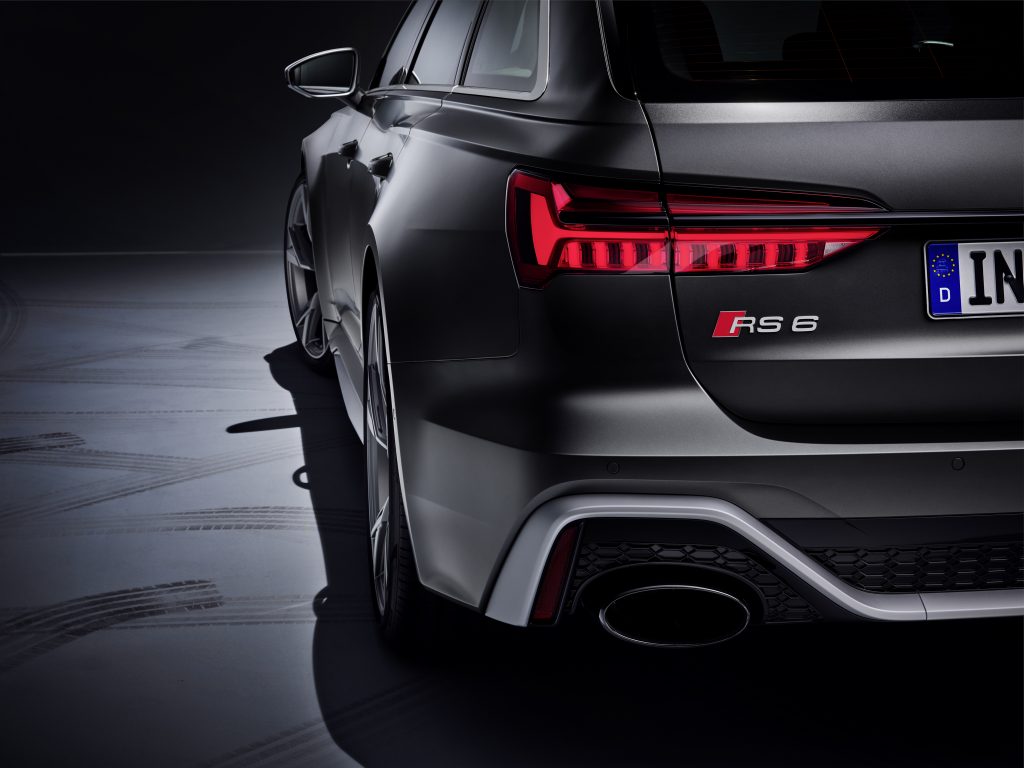
The RS 6 Avant arrived in 2008 – a sports car disguised as an unobtrusive business station wagon. With a completely newly developed V10 engine with FSI direct injection, biturbo charging, dry sump lubrication like in motorsport as well as the quattro permanent all-wheel drive, the RS 6 Avant put itself ahead of the competition. With the impressive V10 complete with 426kW of power and 650Nm of torque, the RS 6 Avant was the most powerful series production Audi to date. The crankcase of the V10 power unit was made in a low-pressure chill casting process from an aluminium alloy – a high-tech material that combines low weight with high strength. The cylinder liners of the connected crankcase were mechanically exposed, with the result that the entire engine weighed only 278 kilograms. In order to meet the most exacting demands in terms of vehicle dynamics at the same time, the engine’s oil circuit was developed with dry sump lubrication, which was tried and tested in motorsport. The external oil container and the oil pump module, which operates with numerous suction stages, ensured that all engine components and the two turbochargers were lubricated at all times. Today, this high-performance technology is used in the Audi R8.
In 2011, RS 3 Sportback with 250kW, which in turn had a five-cylinder engine, brought the RS philosophy to the compact class. In 2013, the RS Q3 opened up another market segment as the first compact SUV. It was powered by the transversely installed 2.5-litre five-cylinder engine, as used in the TT RS and RS 3. At less than 50 centimetres long, the engine was very compact. This made the long-stroke engine (bore x stroke 82.5 x 92.8 millimetres) perfect for transverse installation. Initially, it produced 228kW, but this increased to 250kW from late 2014. The RS Q3 performance that followed in 2016 reached 270kW.
The current RS models: powerful, exclusive and composed.
Audi Sport GmbH currently has seven RS models in its range
- Audi TT RS Coupé and Roadster
- Audi RS 3 Sportback and Sedan
- Audi RS 4 Avant
- Audi RS 5 Coupé
- Audi RS 5 Sportback

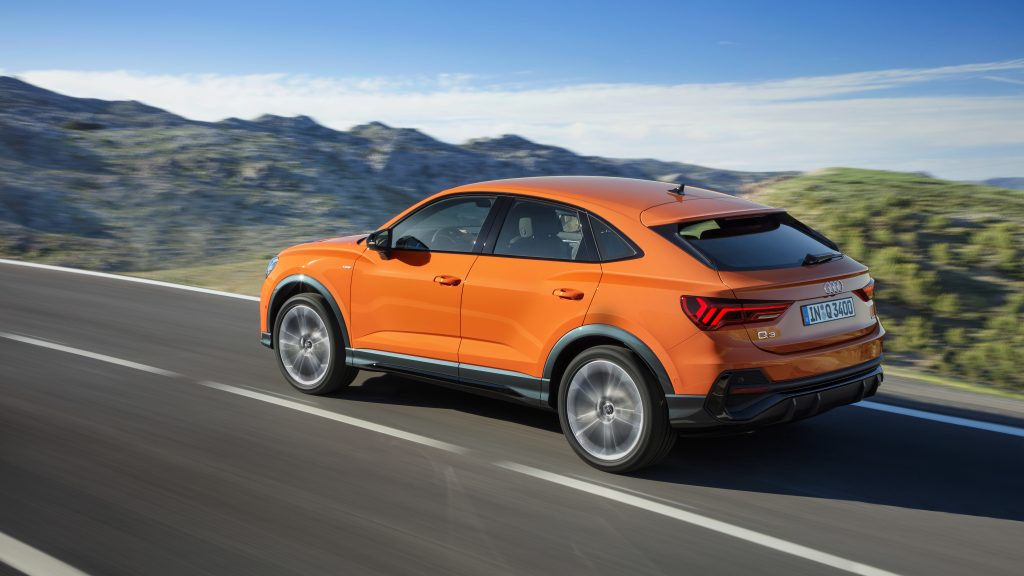
The RS models have extraordinary turbo engines under the bonnet, with the five-cylinder leading the way. During the 1980s, they powered Audi’s highly successful rally cars, touring cars and production models. The first RS model, the RS 2 from 1994 also used a similar engine. The five-cylinder made its comeback in 2009 in the Audi TT RS, making its way into the RS 3 Sportback in 2011 and two years later into the RS Q3. Today the 2.5 TFSI runs not only in the TT RS, but also in the RS 3.
Following revisions, the five-cylinder is 26 kilograms lighter than the previous version – its crankcase is made of aluminium, which alone saves 18kg. Elaborate measures reduce internal friction while increasing power output. The cylinder barrels are plasma-coated; the crankshaft main bearings are six millimetres smaller in diameter. The crankshaft is hollow bored and is therefore 1kg lighter, while the aluminium pistons have integrated channels for oil cooling. In the short warm-up phase after a cold start, the switchable water pump does not circulate the coolant in the cylinder head – meaning the 2.5 TFSI engine reaches its operating temperature more quickly. This lowers the coefficient of friction and reduces fuel consumption. The ignition sequence 1-2-4-5-3, supported by the geometry of the intake and exhaust system, provides the unmistakeable, slightly off-beat engine sound that is so distinctively Audi.
The innovative Dynamic Ride Control damper control system is also exclusive to models with a longitudinally installed engine – a pioneering innovation that was first used in 2002 in the RS 6. This integrated roll and pitch stabiliser consists of a special damper system that counteracts the movements of the vehicle body with no delay and without the use of electronics. When the vehicle is turning into and travelling round a bend, the damper response is altered so that the vehicle’s movements about the longitudinal axis (roll) and about the transverse axis (pitch) are significantly reduced. The dampers on one side of the vehicle are connected to the dampers diagonally opposite to them via two separate oil lines, each of which has a central valve. The valves mounted close to the rear axle provide the necessary compensating volume via internal pistons with the gas-filled compartment behind them. When the vehicle is steering into and travelling round a bend, an oil flow is generated between the diagonally opposite dampers via the central valve, thus creating additional damping force. When one side is cushioned, the damping characteristics are altered such that roll and pitch movements are eliminated almost entirely. As a result, this highly responsive damper system ensures that the RS models have particularly good track stability when negotiating bends.
The RS sport suspension available in the current RS 4 Avant and RS 5 Coupé and Sportback models which features Dynamic Ride Control (DRC), has a three-stage variable damper response. With the aid of Audi drive select, the driver can influence the damper response and thereby personalise the driving experience. The new generation of dampers with integrated valve is more compact and lighter. In addition, it enables the damping forces to be spread even more widely between the comfort and dynamic modes as well as more precise suspension adjustment for high damping forces, which occur when cornering at speed in particular. This means that in the comfort mode, the RS sport suspension with Dynamic Ride Control (DRC) ensures ride comfort. In the dynamic program, it delivers driving precision even when cornering at high speed.

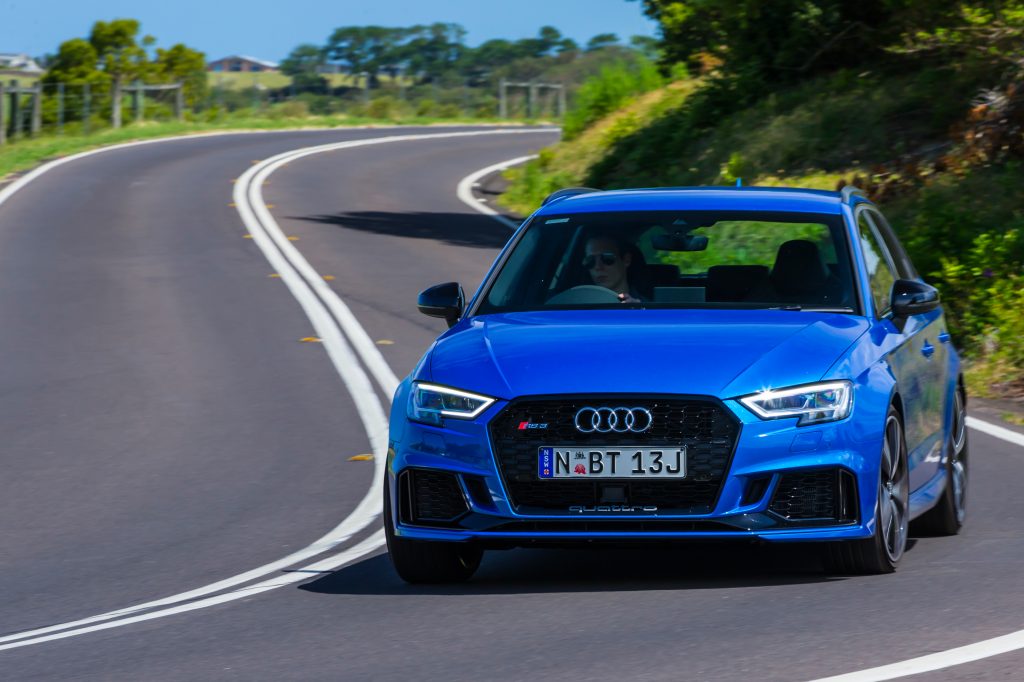
25 years of RS – Exhibition at the Audi Forum in Neckarsulm
On July 12, 2019, an exhibition opened at the Audi Forum in Neckarsulm to mark the anniversary. Besides the familiar production models, a total of 14 genuine RS rarities are presented. Among them is also the racing car version of the Audi TT RS from 2011 that was developed for the factory-backed commitment at the Nürburgring, the RS 5 DTM race touring car that was triumphant in the 2013 season as well as a prototype of an Audi RS 8 that did not go into production. The exhibition also features an RS 4 Sedan that received a highly exclusive paint finish by the Brazilian pop artist Romero Britto.
The RS models in chronological order
- Audi RS 2 Avant (1994): 2.2-litre five-cylinder turbo, 232kW
- Audi RS 4 Avant (2000): 2.7-litre V6 biturbo, 279kW
- Audi RS 6 Sedan and RS 6 Avant (2002): 4.2-litre V8 biturbo, 331kW; from 2004 – RS 6 plus, 353kW, limited to 999 cars
- Audi RS 4 Sedan (2005), RS 4 Avant (2006), RS 4 Cabriolet (2006): 4.2-litre V8, 309kW
- Audi RS 6 Sedan and RS 6 Avant (2008): 5.0-litre V10 biturbo, 426kW; from 2010 – RS 6 plus with top speed adjusted to 303km/h
- Audi TT RS Coupé and TT RS Roadster (2009): 2.5-litre five-cylinder, 250kW; from 2012 – plus version with 265kW
- Audi RS 5 Coupé (2010) and RS 5 Cabriolet (2012): 4.2-litre V8, 331kW
- Audi RS 3 Sportback (2011): 2.5-litre five-cylinder, 250kW
- Audi RS 4 Avant (2012): 4.2-litre V8, 331kW
- Audi RS Q3 (2013): 2.5-litre five-cylinder, 228kW; from 2014 – 250kW; from 2016 – performance version with 270kW
- Audi RS 6 Avant (2013): 4.0-litre V8 biturbo with 412kW; from 2015 – performance version with 445kW
- Audi RS 7 Sportback (2013): 4.0-litre V8 biturbo with 412kW; from 2015 – performance version with 445kW
- Audi RS 3 Sportback (2015): 2.5-litre five-cylinder with 270kW
- Audi TT RS Coupé and TT RS Roadster (2016): 2.5-liter five-cylinder with 294kW
- Audi RS 3 Sedan (2017): 2.5-litre five-cylinder with 294kW
- Audi RS 5 Coupé (2017): 2.9-litre V6 biturbo with 331kW
- Audi RS 4 Avant (2017): 2.9-litre V6 biturbo with 331kW
- Audi RS 5 Sportback (2018): 2.9-litre V6 biturbo with 331kW
